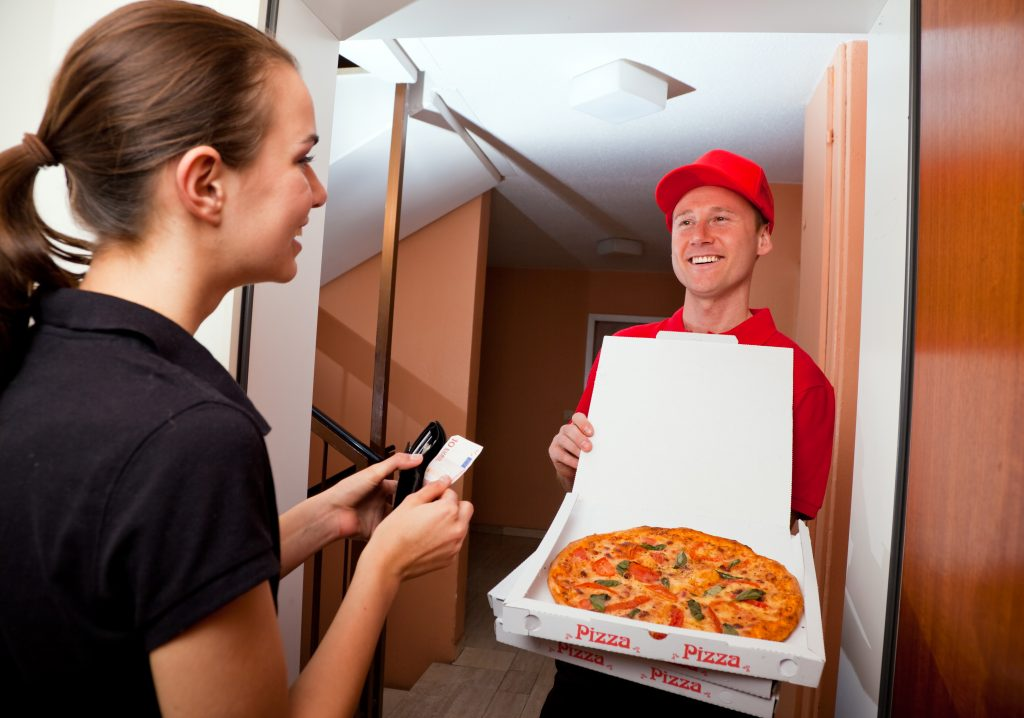In today’s fast-paced world, food delivery has become a convenience we rely on more than ever. Yet, there’s a pressing question that often divides opinions: what’s the right amount to tip a delivery driver? This dilemma can become even more uncomfortable when a delivery driver expresses dissatisfaction with a tip, as in the case of a pizza delivery driver refusing service after feeling underappreciated.
Let’s dive into the world of tipping and uncover what’s considered fair, why it matters, and how to handle such situations gracefully.

The Role of a Delivery Driver
Delivery drivers are the unsung heroes of the service industry. From braving traffic jams to delivering food during torrential rain, their job goes far beyond simply transporting food from one place to another. They’re responsible for ensuring your order arrives hot, fresh, and on time.
Unfortunately, many delivery drivers earn low base wages, relying heavily on tips to supplement their income. This is especially true in regions where the minimum wage for tipped employees is lower than the standard rate.
Why Tipping Matters
Tipping in the service industry is more than just a kind gesture; it’s a financial necessity for many workers. For delivery drivers, tips help cover:
- Fuel Costs: Drivers often use their own vehicles and bear the rising costs of fuel.
- Vehicle Maintenance: Frequent driving leads to wear and tear on their cars, which means higher maintenance expenses.
- Time and Effort: Delivery routes can be time-consuming, especially during peak hours or in poor weather conditions.
Without adequate tips, the financial burden of these expenses can make the job unsustainable.
How Much Should You Tip?
While tipping isn’t mandatory, it’s considered a standard practice in the U.S. Here are some general guidelines to help you decide:
- 10% to 20% of the Order Total: A common rule is to tip within this range, depending on the quality of service and order size.
- Minimum Tip: For small orders, ensure the tip is at least $3 to $5, even if 10% of the bill is less.
- Larger Orders: For bulk or catering orders, consider tipping on the higher end (closer to 20%) or more.
When to Tip More
Certain circumstances warrant a more generous tip:
- Bad Weather: Rain, snow, or extreme heat adds extra challenges for drivers.
- Difficult Routes: If you live in an area with tricky navigation or limited parking, consider tipping more for the added effort.
- Exceptional Service: Did the driver go above and beyond? Maybe they ensured your food was packed neatly or arrived earlier than expected.

Cultural and Regional Tipping Practices
Tipping norms vary widely across cultures and regions. In some countries, tipping is almost non-existent, as service charges are baked into wages. In the U.S., however, tipping is an expected part of dining and delivery culture.
Even within the country, rural areas might lean toward smaller tips, while urban areas often see higher tipping percentages due to steeper living costs. Understanding local practices can guide your tipping decisions.
When Tipping Becomes an Issue
What if a delivery driver feels the tip was inadequate and refuses to deliver to you again? While this is rare, it can happen. Here’s how to handle it:
- Reevaluate the Tip: Reflect on whether your tip was fair based on the order, distance, and effort.
- Communicate: Reach out to the delivery service or the restaurant to address the situation. Express your willingness to resolve any misunderstandings.
- Consider Future Practices: Use the experience to adjust your tipping habits, ensuring they align with industry standards.
The Emotional Impact of Tipping on Drivers
Tipping directly affects a driver’s morale. A well-tipped driver is likely to feel valued and motivated to provide excellent service. Conversely, inadequate tips can lead to frustration and demotivation. In some cases, this can even result in drivers choosing to avoid certain customers.

Alternatives to Traditional Tipping
While tipping is deeply ingrained in many cultures, some argue for alternatives that offer more stability to service workers, such as:
- Higher Base Wages: Increasing hourly pay for delivery drivers would reduce their reliance on tips.
- Service Charges: Adding a standard delivery fee that goes directly to the driver can ensure fair compensation.
- Subscription Models: Services like Uber Eats and DoorDash now offer subscription plans where a portion is allocated to drivers.
These solutions could create a more equitable system, but until they’re widely adopted, tipping remains essential.
How to Avoid Future Delivery Issues
To maintain a good relationship with your delivery drivers:
- Tip Generously: Show appreciation for their effort and dedication.
- Communicate Clearly: If there’s an issue with your order, address it respectfully with the restaurant or service.
- Acknowledge Their Efforts: A kind word or a simple “thank you” can go a long way in making someone’s day better.
Conclusion: A Culture of Appreciation
Tipping isn’t just about the money—it’s a way to show gratitude for the service provided. Delivery drivers work tirelessly to bring us the food we crave, often in less-than-ideal conditions. By understanding the importance of tipping and following general guidelines, we can ensure they feel valued and motivated to continue their hard work.
So, the next time you order in, take a moment to reflect on the effort behind your meal’s arrival. A thoughtful tip can make all the difference—not just in ensuring good service but also in fostering a culture of mutual respect and appreciation.


